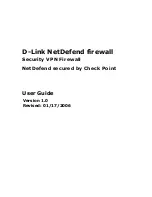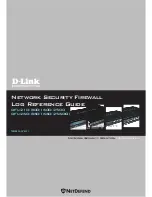
12-6
Cisco Catalyst Blade Switch 3120 for HP Software Configuration Guide
OL-12247-01
Chapter 12 Configuring VLANs
Configuring Normal-Range VLANs
Token Ring VLANs
Although the switch does not support Token Ring connections, a remote device such as a Catalyst 5000
series switch with Token Ring connections could be managed from one of the supported switches.
Switches running VTP Version 2 advertise information about these Token Ring VLANs:
•
Token Ring TrBRF VLANs
•
Token Ring TrCRF VLANs
For more information on configuring Token Ring VLANs, see the Catalyst 5000 Series Software
Configuration Guide.
Normal-Range VLAN Configuration Guidelines
Follow these guidelines when creating and modifying normal-range VLANs in your network:
•
The switch supports 1005 VLANs in VTP client, server, and transparent modes.
•
Normal-range VLANs are identified with a number between 1 and 1001. VLAN numbers 1002
through 1005 are reserved for Token Ring and FDDI VLANs.
•
VLAN configuration for VLANs 1 to 1005 are always saved in the VLAN database. If the VTP mode
is transparent, VTP and VLAN configuration are also saved in the switch running configuration file.
•
The switch also supports VLAN IDs 1006 through 4094 in VTP transparent mode (VTP disabled).
These are extended-range VLANs and configuration options are limited. Extended-range VLANs
are not saved in the VLAN database. See the
“Configuring Extended-Range VLANs” section on
page 12-12
.
•
Before you can create a VLAN, the switch must be in VTP server mode or VTP transparent mode.
If the switch is a VTP server, you must define a VTP domain or VTP will not function.
•
The switch does not support Token Ring or FDDI media. The switch does not forward FDDI,
FDDI-Net, TrCRF, or TrBRF traffic, but it does propagate the VLAN configuration through VTP.
•
The switch supports 128 spanning-tree instances. If a switch has more active VLANs than supported
spanning-tree instances, spanning tree can be enabled on 128 VLANs and is disabled on the
remaining VLANs. If you have already used all available spanning-tree instances on a switch,
adding another VLAN anywhere in the VTP domain creates a VLAN on that switch that is not
running spanning-tree. If you have the default allowed list on the trunk ports of that switch (which
is to allow all VLANs), the new VLAN is carried on all trunk ports. Depending on the topology of
the network, this could create a loop in the new VLAN that would not be broken, particularly if there
are several adjacent switches that all have run out of spanning-tree instances. You can prevent this
possibility by setting allowed lists on the trunk ports of switches that have used up their allocation
of spanning-tree instances.
If the number of VLANs on the switch exceeds the number of supported spanning-tree instances,
we recommend that you configure the IEEE 802.1s Multiple STP (MSTP) on your switch to map
multiple VLANs to a single spanning-tree instance. For more information about MSTP, see
Chapter 18, “Configuring MSTP.”
•
When a switch in a stack learns a new VLAN or deletes or modifies an existing VLAN (either
through VTP over network ports or through the CLI), the VLAN information is communicated to all
stack members.
•
When a switch joins a stack or when stacks merge, VTP information (the vlan.dat file) on the new
switches will be consistent with the stack master.
















































